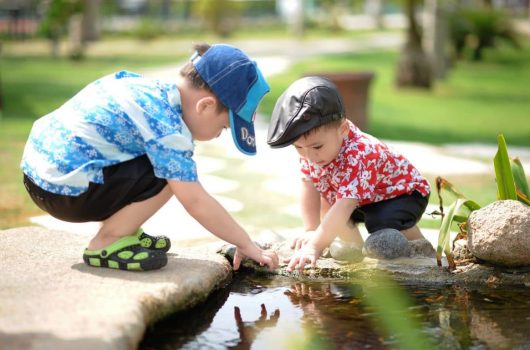Toddlers are tiny humans who never seem to run out of energy. It is basically like having your own Energizer bunny running around every corner of your house. The thing about toddlers is that not only are they non-stop, they get into everything. Remember that time 3 weeks ago that you gave your little one Cheerios for a snack? Yeah, that little booger will find the lost one in between the couch cushion and eat it in no time.
No matter how hard we try to keep our little one’s safe from danger or dirty surfaces, it is inevitable that it is going to happen. They are going to get that bruise or that scratched knee, and they are going to eat that left-over couch cushion Cheerio. The best thing we can do is prepare ourselves for the mishaps to come.
What is Ringworm?
Ringworm has absolutely nothing to do with worms, so don’t become concerned that your little one is going to suddenly have worms coming out of his or her body, unless your toddler likes to play in the dirt and hide some in the diaper – who knows!
Ringworm is a fungal infection that occurs on the skin. These fungal infections can commonly occur near the groin as jock itch, or on the foot as athlete’s foot. When the infections are found elsewhere on the body it is considered ringworm.
What Does Ringworm Look Like?

The rash exhibits itself as a red ring, hence the term “ring” worm. It is most commonly found on the chest, back of the legs, or back. The rings will be crustier on the outside and smooth towards the inside. Your child may complain of itchiness because this rash can be itchy. The rings can become larger as the fungus grows.
How Do Toddlers Get Ringworm?
Most commonly ringworm is developed through a cut, scratch, or eczema patch. Direct contact is key to contracting ringworm. Toddlers come in contact with so many surfaces that if one infected person touched it, it can easily be transferred. Touching some infected person, sheets, towels, toys, or clothes can cause the fungus to be transferred. Ringworm is tricky to combat because you don’t knowingly expose your child to infected surfaces.
Most toddlers don’t contract ringworm from their own home, day care is the most common place for the fungus to be contracted.
How to Prevent Ringworm
You can’t protect your child from the unknown, as much as parents wish they could. The best thing you can do is help your child stop the fungus from spreading any further once it develops.
To do this simply follow some of these easy steps:
- Tell your friends and family that your child has ringworm, so they can check if they have been infected.
- Take your pets for a check-up at the vets if you notice crusty bald patches of skin, which is a sign of a ringworm infection.
- Make sure everyone in your household washes their hands frequently.
- Wash everyone’s bedding, towels, and clothes, and wash or throw away hairbrushes or clothes that could be infected.
- If your child has ringworm on her scalp, treat all family members with antifungal shampoo.
The Bottom Line
Do the best you can to ensure that your child isn’t around infected children. This seems obvious, but some parents still send their children to daycare with this infection. If your child develops ringworm it isn’t the end of the world and it isn’t a testament to bad parenting. There are only so many things parents can control and unfortunately this isn’t one of them. If your child contracts ringworm be sure to purchase an anti-fungal cream to treat it. Once the fungal infection is gone wash all bedding, clothes, and scrub down toys to prevent it from reoccurring.
